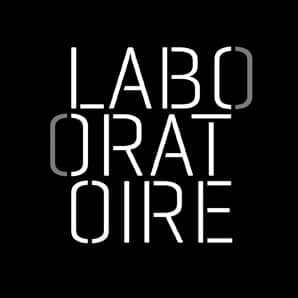Apr 20, 2017 | Laboratoire en
A world of worlds
In the middle of the XVIII century, at the request of Louis XV, Cassini de Thury will establish the first topographic survey of France. For three years, between 1758 and 1761, he set up his observatory on the commune of Saint-André-la-Côte at Signal, at 934m of altitude and 20 kilometers of Lyon, to establish by triangulation the first map of Lyon.
In four generations, the Cassini will make the first topographic and geometric map of the whole kingdom of France, established at the scale 1/86 400.
These works are so reliable that many researchers – archaeologists, historians, geographers, botanists, landscapers … are now consulting the Cassini map when they need to do a retrospective analysis of the landscape.
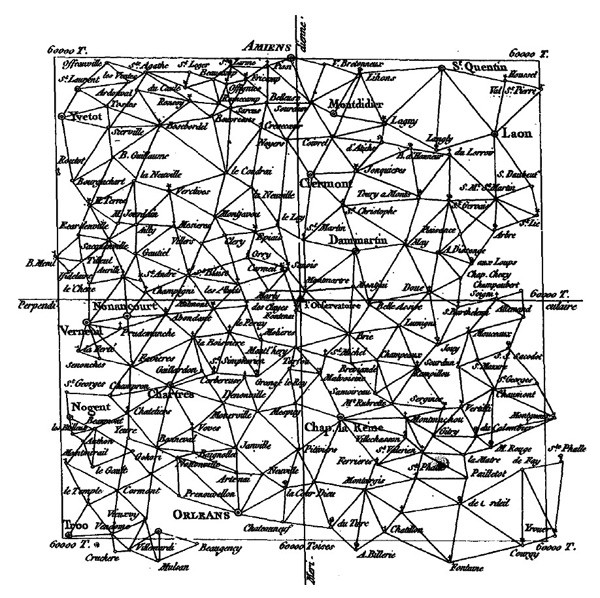
It is from this signal that will be released, on June 25, 2017 at 11 am, pigeons passing with them messages collected from the inhabitants of the Monts du Lyonnais. Everyone, child and adult, native of here or other territories, is invited to express on a message a geographical point that is particularly close to his heart. This affective attachment to a particular place can be based on different reasons – its place of birth, the memory of a romantic encounter, a dream of paradisiacal holidays, the pain of an exodus … and concern a territory in the vicinity near or located At the other end of the planet.
The traveling pigeons are bred by Dominique Cœur at the Aubépin in the commune of 69590 Larajasse. These birds usually participate in international competitions around the world where they fly up to 120 km / h for 750 to 1000 kilometers. They perpetuate a distant tradition, since for over 3000 years, the pigeons have transmitted messages over very long distances, carrying a piece of paper ringed to their paws from the ship of an explorer or a besieged city. These very short messages, sometimes coded, are somewhat the ancestors of tweets that circulate today from one phone to another. A poetic filiation since English tweets means chirping.
By inviting everyone to entrust his emotional geography to a traveling pigeon, Philippe Mouillon hopes to collect the planetary scale of the worlds gathered in this territory of local appearance of the Monts du Lyonnais. Each message will be mapped to the format needed to be sent by a pigeon. The release of June 25 will allow the birds to fly at the same second, and the order of arrival of the pigeons will determine an unknown hierarchical map order that will be edited as the Atlas of the worlds of each.
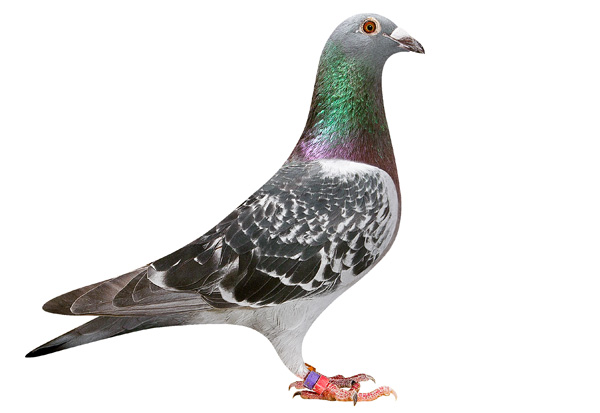
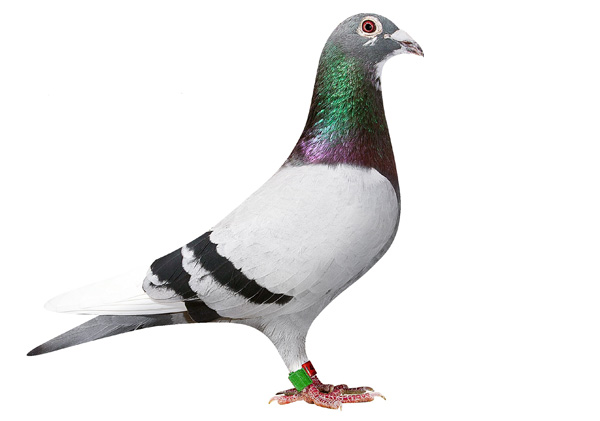
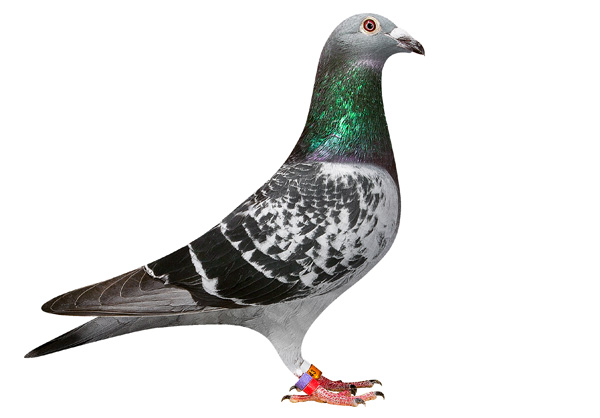
Atlas of the worlds of each is a proposal of Philippe Mouillon,
Produced by LABORATOIRE with the support of the DRAC Auvergne Rhône Alpes, the Department of the Rhône, the Auvergne Region Rhône Alpes, the Community of communes of the Monts du Lyonnais.
> To participate: contact@lelaboratoire.net
Apr 20, 2017 | Laboratoire en
Contemporary Migrations in the Mediterranean
A multimedia device by Maryvonne Arnaud
> Original texts: Erri de Luca
> Translation: Danièle Valin
> Additional texts: Erri de Luca extracts from ALLER SIMPLE (Gallimard editions 2012)
> General design and shooting: Maryvonne Arnaud
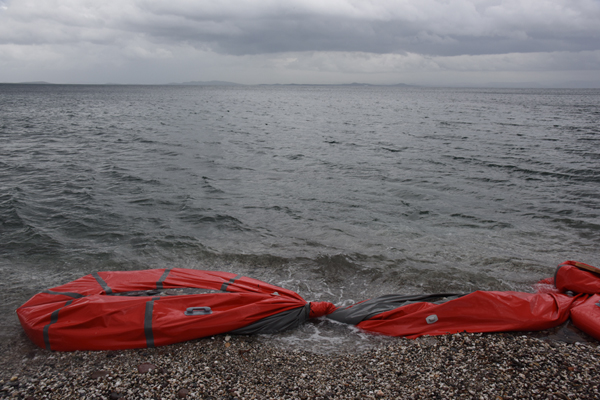
> Editing images and sounds: Guillaume Robert
> Voices: Sophie Vaude, Jean-François Matignon, Dominique Laidet,
> Scientific Council: Anne-Laure Amilhat Szary, Alain Faure, Yves Citton
Preparatory study (May 2016): 22-minute video loop
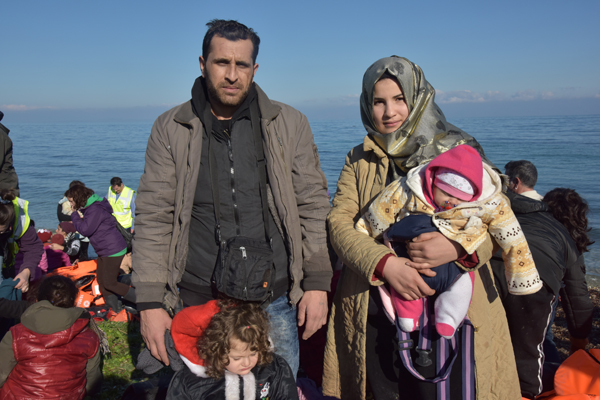
Preview:
> At CHRD / Lyon, on 28 and 29 May 2016, at the end of the exhibition “Dreaming of another world”.
> At the cinema Utopia / Avignon, every odd day at 11 am from 7 to 25 July 2016
> To MC2 / Grenoble, during the General Assembly of Migration organized by the Cimade
Apr 7, 2017 | editions en, local contemporain en
Do printed maps still matter in our digital age? The availability of digital signal, the demand of real-time data, the omnipresence of telephone that become mobile-compasses, all are often thought to condemn paper. We now know that no map is true, perfectly precise or definitive. Like classic translations, constantly reworked, cartography is a translation amongst others, eternally incomplete and obsolete. Artists never aim to be neutral or exhaustive. Their approach toward scenery is by essence a refusal of the norm, the choice of a personal interpretation, a call to look differently at those landscapes we thought we knew well. Mappages assembles artists who approach maps as a means of expression rather than as orientation tool; questioning the pretence of maps as absolute things; a call to the “map of the day after“, that which would complete the experience of a territory never definitively documented. The French word mappe, old-fashioned and unusual, has been chosen rather than carte. Map and mappe both come from nappe (table cloth). Mappage is a mix between the map and the page: long live printed maps!
“Walking with satellites” is the result of a work carried out over three weeks, with the collaboration of 65 students equipped with GPS receivers; it is both an orientation tool and the story of a collective experiment. 475 kilometres were covered on foot over the 185 hectare campus, while avoiding all existing paths. Roads and buildings disappeared, replaced by loops and convolutions. Under Jeremy Wood’s direction, the Grenoble campus has revealed its unseen and delicate composition. It is a map made of methodical meanderings, second thoughts, day dreams and wanderlust. On the front of the map (the recto) we see the campus’ connection to the city, thanks to the crossing of the Isère, or the discreet presence of the buildings. The map printed on the back reflects a floating silhouette, almost primitive and wild, looming from prehistoric times.
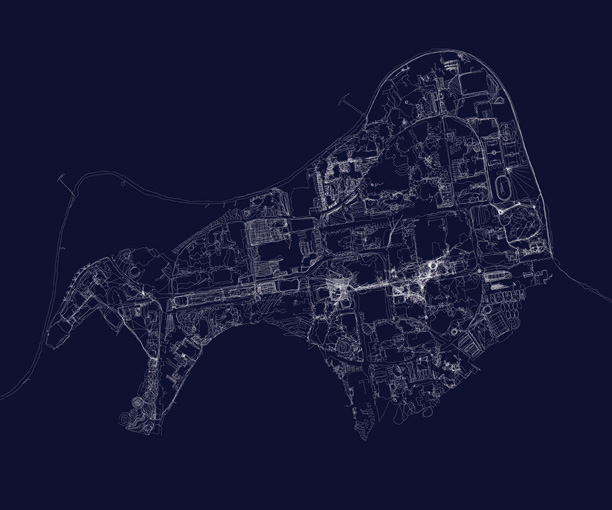
Mappages : Directeur de collection : Guillaume Monsaingeon
ISBN 978-2-9516858-2-6
Prix de vente public : 5 €
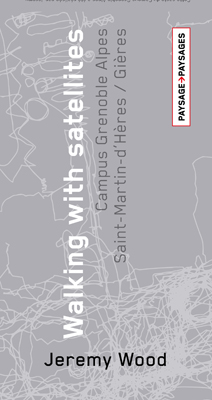
Download the order form
May 12, 2016 | Laboratoire en
The philosopher Daniel Bougnoux thus comments on this disturbing experience of an exhibition where the images are present only in our own mental imagination: “To exhibit only words in a museum, and on this scale, what a challenge! This game of interlockings, and referrals, tells us something about our ways of apprehending and handling the vast world around us. Words will never give us the equivalent of the thing seen, the legible does not equal the visible; and no painting, circumscribed within its frame, will cover the bouquet of visual, auditory, tactile, olfactory sensations…, tied together by a landscape. The (semiotic) map is not the territory. But the characteristic of art, or even of a word, is not to represent a world, but to suggest it, to reduce it to a sketch capable of setting a chain of thoughts or sensations on fire. The slow wick of words sets our mental images ablaze…”
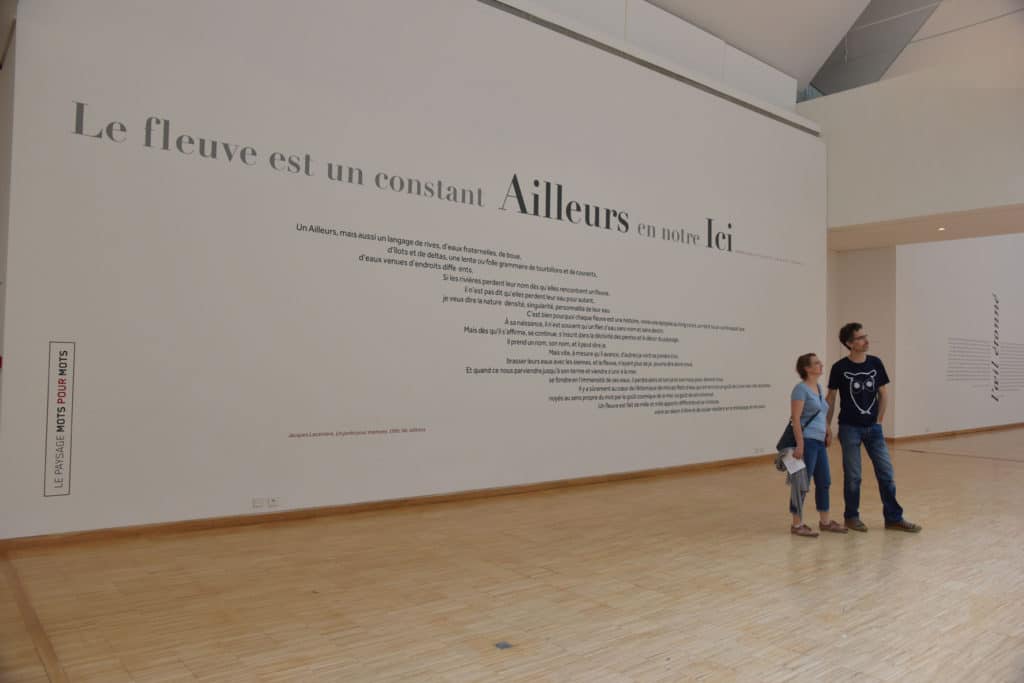
On each of the eight walls of the central aisle of the Grenoble Museum are printed pairs of texts:
The first is a fragment belonging to world literature and chosen by one of the invited authors, writer or philosopher: Daniel Bougnoux, Patrick Chamoiseau, Christian Garcin, François Jullien, Jacques Lacarrière, Marie-Hélène Lafon, Céline Minard, Alain Roger.
The second text is a rebound written today by this author and which argues his choice: Why from my mental library retain this fragment: power of a description, arrogance of a proposition, radical questioning of our certainties about the countryside ? And the luxuriance of the sensibilities of the authors chosen refines our understanding of what makes a landscape emerge and impose itself on us: Jean Giono, Stendhal, Aragon, Héraclitus, Balzac, Aimé Césaire, Mario Rigoni Stern, Oscar Wilde (who prophesied in “The Decay of Lying”: “At present, people see fogs, not because there are fogs, but because poets and painters have taught them the mysterious loveliness of such effects. There may have been fogs for centuries in London. I dare say there were. But no one saw them, and so we do not know anything about them. They did not exist till Art had invented them »




